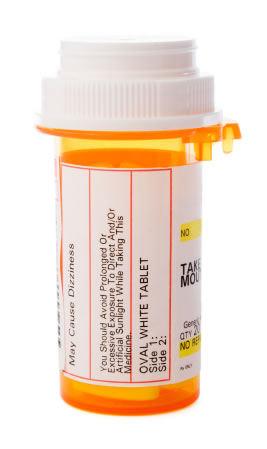Fat soluble vitamins are stored in the body’s fatty tissue and liver. These vitamins are used over a period of time unlike water soluble vitamins that need to be replenished daily. Individuals with an inability to digest fats, as in intestinal disorders or persons with reduced consumption because of low fat diets, may have deficiencies in fat soluble vitamins, which include A, D, E and K. Excesses occur in the body as fat soluble vitamins are not as readily eliminated.
A healthy well-balanced diet containing foods from all four food groups is the way to ensure the body is obtaining adequate amounts of these vitamins.
Vitamin A
Vitamin A consists of retinols and carotenes (alpha, beta and gamma), which are converted in the body after consuming animal and plant products. The vitamin in carotene form is transformed into retinol while in storage, or into the active form retinal, and back again as needed. Vitamin A conversion takes place in the intestine. Healthy sources of vitamin A include:
- Animal fats
- Butter, buttermilk or margarine
- Cod liver oil or oily fish
- Egg yolks
- Green leafy vegetables
- Liver
- Yellow/orange fruits and vegetables
Purpose
Vitamin A is essential for fighting infection, maintaining healthy body tissues, and contributes to bone and teeth development. In reproduction, vitamin A in retinal form, binds to the nucleus of cells and assists with beginning and ending gene transcription, making it essential in neonatal development and ongoing growth and repair. Vitamin A, in the form of retinal, binds to the rods and cones of the eye, permitting light adaptation and the ability to see color.

Vitamin A as retinoic acid is a successful acne treatment as it shrinks sebaceous glands and inhibits secretions. In the form of isotretinoin, vitamin A decreases the number of skin bacteria and the bacterial nutrient sebum.
Recommended Daily Dosages:
- Infants require 1,300 to 1,650 IU daily depending on age.
- Children require 1,000 to 2.000 IU daily depending on age.
- Women require 2,300 IU of vitamin A daily.
- Men require 3,000 IU of vitamin A daily.
Deficiencies
Getting less than the minimal daily requirements is a concern for children in third world countries. Another form of deficiency occurs in persons who eat low fat diets, conditions that prevent fat absorption, or those subjected to chronic oxidants like cigarette smoke.
Fat Soluble Vitamins? Get Remedies Fast!
Inadequate amounts of vitamin A cause a preventable form of blindness as keratin deposits and builds up on the cornea, causing erosion and destruction. Deficiencies of this vitamin lead to impaired growth and development, inability to fight infection, malfunction of the gastric, urinary, and respiratory systems due to impaired tissue development, night blindness and dry, thickened and peeling skin.
Toxicity
Excessive vitamin A intake results in anorexia, bone and joint pain, changes in mental state, drying and peeling skin and lips, yellow/orange discolored skin, hair loss, vomiting and weakness. Taking vitamin A in amounts exceeding the daily requirement, results in birth defects in unborn children.
Tips: Though vitamin A is not destroyed by cooking, freezing foods could result in a 10-20% loss.
Vitamin D
Whether absorbed and synthesized by the skin or ingested, vitamin D is absorbed by the liver through the blood and transformed into calcidiol. Once converted, vitamin D is transported to the kidneys and the immune system through the blood. In the kidneys, vitamin D is transformed again and recirculated in the blood where it binds to receptor sites throughout the body. The skin only synthesizes the necessary amount of the vitamin, after which it is no longer manufactured, so overdoses cannot occur in this manner.
The vitamin D group contains D2 (calciferol), D3 (7-dehydrocholesterol), D4 (22-dihydroergoasterol) and D5 (dehydrositosterol). Healthy sources of vitamin D include:
- Butter fat
- Cod liver oil, salmon, and oily fish
- Egg yolks
- Foods that have been irradiated
- Fortified milk and foods
- Sunlight
Purpose
In the blood, vitamin D regulates calcium and phosphorus, thus contributing to bone and teeth formation.
Vitamin D also aids in white blood cell production and determination. The vitamin increases infection fighting white cell activity and contributes to the chemical white cells excrete in combating bacteria, fungus and viruses. Some research studies suggest that increasing daily intake to 1000 IU daily has a dramatic effect in preventing cancer.
Because of vitamin D’s wide range of abilities, persons found to have low levels overall had higher mortality rates and premature aging due to body malfunction.
Recommended Daily Dosages
Infants to adults require 200 IU of vitamin D daily. Elderly adults require 400 IU daily.
Deficiencies
Persons getting less than the minimal daily requirements experience irritability, weakness, malabsorption of calcium and phosphorus causing poorly developed or deformed bones and teeth in a condition known as rickets. Adults may experience osteomalacia, where bones thin, become fragile and are accompanied by muscle weakness.
Toxicity
Ingesting excessive amounts of vitamin D results in abnormal kidney function, anorexia, anxiety, excessive urination and thirst, excessive blood calcium levels, nausea, vomiting and weakness.
Tips
15 minutes of exposure to sunlight daily allows the skin to synthesize enough vitamin D for 24 hours. However, vitaimin D deficiencies are still noted in third world countries where there is an abundance of sunshine. Individuals are advised to consume meats or fortified milk and foods to ensure an adequate intake.
Vitamin E
The vitamin E group consists of tocopherols and tocotrienols and each has four forms, alpha, beta, delta and gamma. The human body requires alpha-tocopherols. Vitamin E is absorbed by the liver from the intestine and recirculates it through the bloodstream. Healthy sources of vitamin E include:
- Asparagus
- Avocado
- Eggs
- Leafy green vegetables
- Milk
- Nuts
- Rice
- Seeds
- Vegetable oils
- Wheat germ
- Whole grain foods
Tocotrienols are specifically found in barley and other grains, nuts, saw palmetto, wheat germ and vegetable oils.
Purpose
Vitamin E is essential for maintaining healthy cell membranes as it is believed to act as an antioxidant which minimizes aging effects and disease processes brought about by free radicals on the body. Free radicals are molecules with an unpaired electron. These combine with oxygen to cause damaging effects commonly associated with cardiovascular disease and cancer.
Tocotrienols have been researched and show promise in protecting brain cells against damage, inhibiting cancer and decreasing blood cholesterol. The unsaturated chain increases absorption into fatty tissue making it more effective as a protectant.
Vitamin E in the lining of blood vessel walls helps minimize build up of harmful plagues and blood clots. In addition, early research suggests that vitamin E may play a part in preventing age related macular degeneration in the elderly.
Recommended Daily Dosage
- Infants require 6.75 to 10 IU of vitamin E daily.
- Children require 9 to 10 IU of vitamin E daily.
- Adults require 22 IU of vitamin E daily.
Deficiencies
Inadequate amounts of vitamin E result in edema, muscle weakness and neurological deficits related to poor nerve conduction. Anemia occurs as a result of red blood cell damage.
Toxicity
Excessive doses cause breast enlargement, blurred vision, headaches, flu-like symptoms, hemorrhagic strokes and prolonged bleeding times. Administering the vitamin to low birth weight infants may result in colitis and sepsis. Pregnant women are advised against taking vitamin E supplements as they cause congenital heart defects in unborn children.

Vitamin K
The vitamin K group consists of K1 (phyloloquinone) and K2 (menaquinone). Synthetic forms of the vitamin include K3 (menadione) found in pet foods (but banned in OTC use), K4 and K5, which inhibits fungal growth. K2 is naturally manufactured by the bacteria in the large intestine. Vitamin K requires bile salts and fats to be properly absorbed. Healthy food sources include:
- Avocados
- Dairy products
- Eggs
- Green leafy vegetables
- Kiwi fruit
- Meats
Purpose
The vitamin allows the liver to synthesize clotting factors ( II, VII, IX and X), which are vital in preventing bleeding abnormalities. Vitamin K is used as an antidote for coumadin and hemorrhagic rat poisons.
Topically, the vitamin is prescribed to diminish post surgical bruising, broken capillaries, rosacea and dark under eye circles. As infants are not born with the intestinal bacteria necessary to form vitamin K, an injectible form is administered.
There is a correlation between vitamin D and K in the development of healthy teeth and bones. Ongoing research suggests that vitamin K reduces liver and prostate cancers.
Recommended Daily Dosage
- Newborns receive 0.5 to 1.0 mg injections of vitamin K at birth.
- Infants require 10 to 20 mcg of vitamin K daily.
- Children require 15 to 100 mcg of vitamin K daily, depending on age.
- Women require 90 mcg of vitamin K daily.
- Men require 120 mcg of vitamin K daily.
Deficiencies
Inadequate amounts of vitamin K result in prolonged bleeding times or hemorrhagic conditions. Individuals with intestinal disease are unable to manufacture vitamin K and are in need of supplementation. Prolonged use of large doses of antibiotics annihilate the bacteria necessary to produce vitamin K.
Toxicity
Vitamin K3 has been banned from OTC supplements as ingestion results in allergic reactions, anemia and destruction of liver cells.
Tips
1 tablespoon of parsley contains 153% of the FDA’s recommended daily allowances of vitamin K.

No Comments